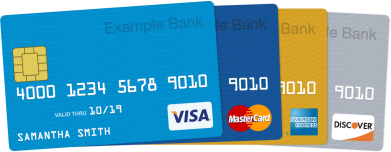
Americans love credit cards. Shopping for a credit card can save you money. Not all credit cards are alike. Here are some ways in which they differ:
The annual fee. Some credit cards charge an annual fee, and some do not. The amount of the annual fee may vary from card to card. Most people who have a strong credit record can find cards that do not charge an annual fee.
Other fees. Credit cards usually charge stated fees for late or missed payments, going over your credit limit, or making certain transactions such as cash advances.
The annual percentage rate (APR). The APR can vary from card to card by several percentage points. Furthermore, some credit cards offer a low APR for the first few months and then increase it after three or six months. The APR on cash advances often differs from the APR for purchases.
The grace period. This is the amount of time a cardholder has to pay the credit card balance without paying interest. The longer the grace period, the more interest-free days the cardholder has. If the entire balance is paid within the grace period, no interest is due.
The way interest is figured. There are many different methods of calculating credit card interest. These include:
- Average daily balance: The interest rate is calculated each day on the average of each day’s balance for the billing cycle. This is the most frequently-used method.
- Adjusted balance: The interest rate is calculated on the opening balance after subtracting the payments made during the month.
- Previous balance: Interest is calculated on the opening balance regardless of payments made during the month.
The credit limit. This is the maximum amount of money a cardholder can charge. A higher credit limit gives the cardholder flexibility but can also lead to credit card balances that are difficult to pay off.
Credit cards also differ in the types of services offered; this can be a reason to choose one card over another. Here are some of the services:
- High or no credit limits.
- Rewards for the cardholder such as cash back, gifts, airline miles, or a discount on a new car.
- The number of merchants who accept the card.
- Travel services such as covering the rental car insurance deductible, discounts on hotels, travel-life insurance, or check-cashing privileges.
![]()
Filed under: AP Macro, credit cards, personal finance |


Leave a comment